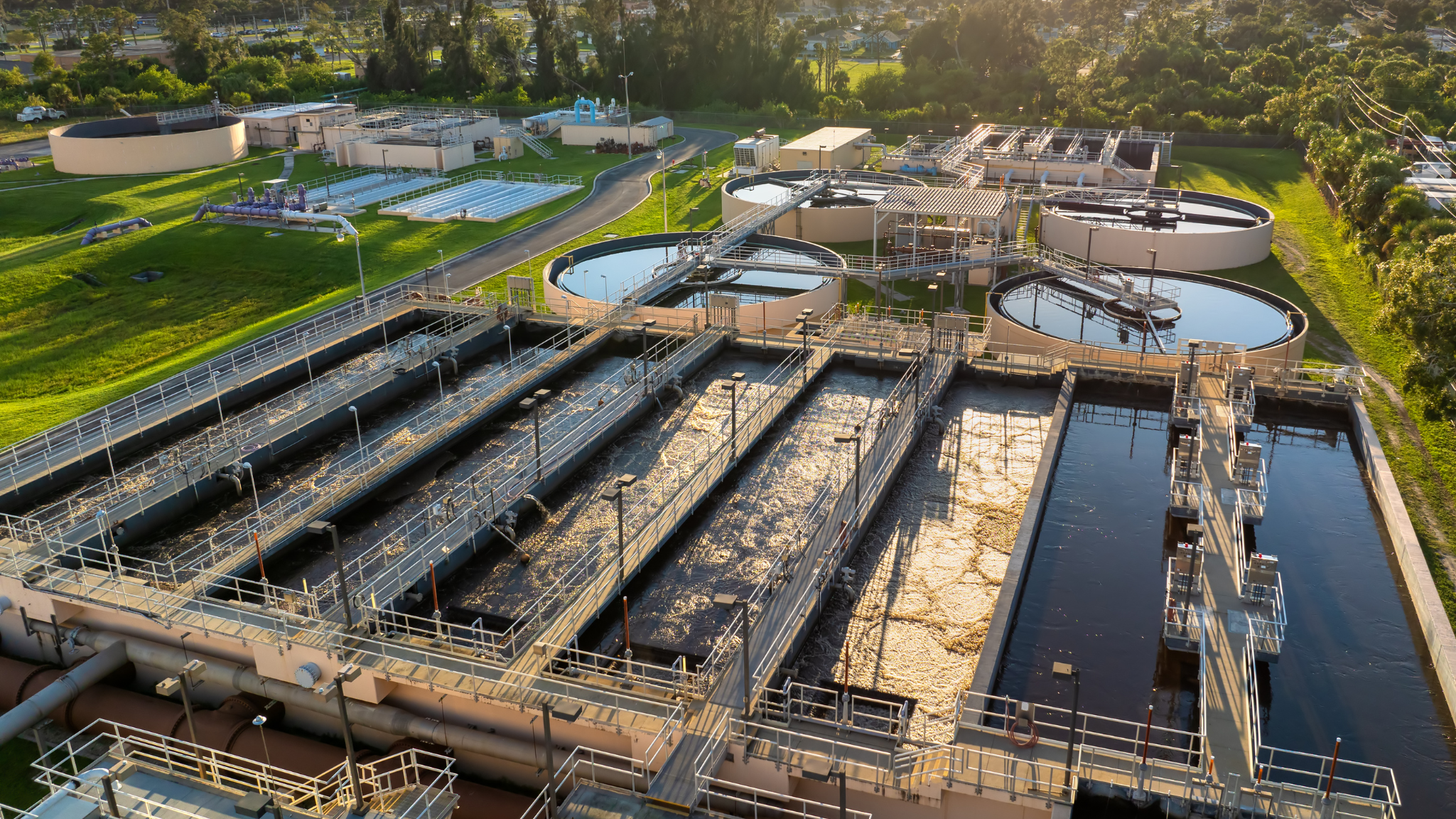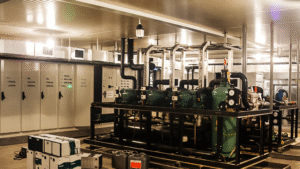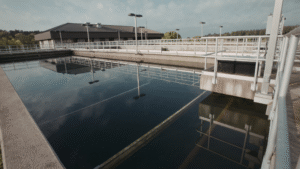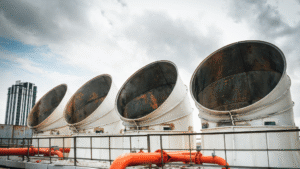Access to clean water is one of the most critical requirements for health, safety, and operational reliability. Across industrial, commercial, and municipal facilities, maintaining high-quality drinking water is not just about appearance or taste—it’s about chemistry, compliance, and system performance. Effective potable water treatment ensures that every drop meets drinking water standards and remains free from contaminants that can compromise health and equipment.
As water passes through natural and manmade systems, it collects organic contaminants, inorganic contaminants, and microorganisms from surface water, piping, and environmental sources. Without proper treatment, these pollutants can result in corrosion, bacterial growth, and operational inefficiencies. Modern water treatment plants rely on advanced chemistry and technology to safeguard public health, prevent fouling, and maintain consistent water quality.
In this article, we’ll explore five of the most common potable water treatment problems that facilities face today—and how to solve them using effective processes, proven chemistry, and smart system management. By understanding these challenges, operators and engineers can ensure that their treated water remains safe, stable, and fully compliant.
Problem 1: Microbial Contamination — Bacteria, Viruses, and Pathogens
Microbial contamination is one of the most persistent and potentially dangerous issues in potable water treatment. Even when water appears clear, it can harbor invisible bacteria, viruses, and pathogens that pose serious health risks. These microorganisms often enter raw water sources such as lakes, reservoirs, or wells through agricultural runoff, sewage leaks, or decaying organic matter. Once present in a water supply, they can multiply rapidly if not properly managed through effective disinfection and monitoring.
The first step in controlling microbial growth is using chemical disinfectants such as chlorine. Chlorine works by penetrating and breaking down cell walls, effectively destroying bacteria and viruses. However, maintaining the right contact time and concentration is critical. Too little, and microbes survive; too much, and you risk odor issues and corrosion in the treatment system. For facilities looking to minimize chemical use, technologies like UV light disinfection provide an alternative method, disrupting microbial DNA without adding chemicals to the water.
In most drinking water treatment systems, filters remove germs that survive initial disinfection. Fine media filters or very small pores in semi permeable membranes can capture microorganisms before the water reaches distribution. When combined with regular cleaning and verification, these steps ensure consistently safe drinking water. With expert guidance, facility operators can maintain compliant water quality and protect both human health and infrastructure.
Also read: Wastewater Purification System: Microbial Testing Explained
Problem 2: Scaling and Corrosion
Another major challenge in potable water treatment systems is the formation of scale and corrosion within distribution networks and equipment. Both problems stem from chemical imbalances in the water treatment process and can lead to serious performance and safety issues over time.
- Scaling occurs when salts and mineral acids in feed water reach higher concentrations and begin to precipitate on internal surfaces. These deposits restrict flow, reduce heat transfer efficiency, and can damage filters, boilers, and heat exchangers. When water passes through areas with varying temperature or pH, minerals such as calcium carbonate settle and form hard scale that is difficult to remove.
- Corrosion, on the other hand, results from the reaction between treated water and metal components. Low pH, dissolved oxygen, or heavy metals can accelerate oxidation and pitting, compromising pipes and equipment integrity. Once corrosion begins, it can release metal ions back into the drinking water, affecting taste, odor, and safety.
Proper control requires maintaining balanced pH and alkalinity while using inhibitors that prevent mineral buildup and metal degradation. In modern treatment plants, engineers often rely on precise dosing systems and corrosion-control chemicals to stabilize water quality and extend infrastructure lifespan. When managed correctly, a facility’s potable water system remains efficient and compliant with drinking water standards.
Also read: Understanding Condensate Treatment: Oxygen, CO₂, and the Role of Blended Amines
Problem 3: Sediment, Suspended Solids, and Turbidity
Even the clearest-looking drinking water can contain microscopic particles that affect clarity, taste, and overall water quality. Sediment and suspended solids are common issues in potable water treatment, leading to turbidity, clogged lines, and increased wear on valves and filters. These impurities often originate from surface water sources, agricultural runoff, or internal system corrosion.
The treatment process for particle removal involves several key steps:
- Coagulation and gentle mixing: Chemicals or electrical charges neutralize particles so they clump together.
- Sedimentation: The heavier particles settle at the bottom of a basin or clarifier.
- Filtration: Several filters made of sand, carbon, or membranes capture finer material before water reaches distribution.
In advanced systems, a process called ultrafiltration uses membranes with very small pores to remove microscopic contaminants, ensuring visibly clear water and safe drinking water.
If these filters are not periodically removed and cleaned, sediment can accumulate, promoting microbial growth and reducing the efficiency of disinfection. Consistent filtration maintenance prevents pathogens from surviving downstream and keeps the treatment plant operating efficiently. Whether working with raw water, surface water, or municipal sources, removing solids is essential to protect infrastructure and produce treated water that meets drinking water standards.
Also read: Temperature and Its Effects on Coagulation Process in Water Treatment
Problem 4: Chemical Imbalance
Even when water looks clean and clear, it may still be chemically unstable. In potable water treatment, pH and alkalinity control are vital to maintaining safe drinking water and protecting infrastructure. When chemical disinfectants or minerals are not properly balanced, treated water can become either too acidic or too alkaline. These fluctuations affect taste, cause corrosion, and reduce system lifespan.
An imbalanced treatment process can create additional problems:
- Low pH: Acidic water passes through pipes, corroding metal surfaces and releasing heavy metals like copper or lead.
- High pH: Scaling occurs when salts and mineral acids precipitate, forming deposits inside pipes or equipment.
- Unstable oxidation: Incorrect use of oxidizers such as hydrogen peroxide or chlorine during advanced oxidation can damage system components and create odor issues.
Proper pH control relies on consistent testing, precision dosing, and the right chemical added at the correct concentration. Many modern treatment plants use real-time sensors to adjust alkalinity and ensure stable chemistry throughout the system. This prevents scaling, supports effective disinfection, and ensures compliance with drinking water standards.
Also read: Chemical Options for Alkalinity Control in Water Treatment
Problem 5: Contaminants and Odor Issues
Even after filtration and disinfection, contaminants can remain in treated water, causing safety, taste, and odor issues. These pollutants come from multiple sources and vary in chemical nature. In potable water treatment, contaminants are typically grouped into three categories:
- Organic contaminants – such as vinyl chloride, solvents, and by-products from industrial or agricultural runoff.
- Inorganic contaminants – including heavy metals, mineral acids, and salts that leach from soil or aging infrastructure.
- Radioactive material – naturally occurring or introduced through mining, medical, or industrial processes.
These substances can cause discoloration, unpleasant taste, or serious health concerns when present in high concentrations. Traditional filtration processes and oxidation methods often cannot remove all microscopic compounds or odor compounds, especially those with low molecular weight.
To address these challenges, modern water treatment plants use advanced techniques such as reverse osmosis, advanced oxidation, and semi permeable membranes that remove contaminated water components on a molecular level. These filters remove germs, salts, and complex organic matter, allowing only clean water to pass through. Processes that combine UV light with hydrogen peroxide also enhance oxidation efficiency and break down stubborn contaminants.
Also read: Chemical Formulations for Industrial Odor Control: A Complete Guide
ETI’s Integrated Approach to Potable Water Treatment
At ETI Water, potable water treatment isn’t just about compliance; it’s about chemistry, innovation, and reliability. ETI’s advanced formulations and technical expertise help facilities produce safe drinking water, prevent contamination, and protect critical infrastructure across industrial, municipal, and commercial applications.
Our customized programs are built on decades of hands-on water chemistry experience. From disinfection and pH control to filtration and corrosion prevention, ETI’s specialists design complete chemical solutions that address both water quality and operational performance.
Advanced Coagulant Water Treatment Solutions
Effective clarification begins with proper coagulation, the process of binding fine particles and suspended solids so they can be easily removed. ETI’s advanced coagulant technologies are engineered to improve settling characteristics, reduce sludge volume, and deliver consistent results even under variable feed water conditions.
ETI’s Coagulant Advantage includes:
- Enhanced floc formation for faster clarification
- Broader pH and temperature operating windows
- Lower chemical consumption and sludge production
- Compatibility with biological and downstream filtration systems
ETI offers a full range of inorganic, organic, and specialized blended coagulants, including:
- Aluminum-based coagulants (aluminum sulfate, PAC, ACH) for high-turbidity surface water
- Iron-based coagulants (ferric chloride, ferric sulfate, ferrous blends) for phosphorus and metal removal
- Polyamine coagulants for sensitive or high-turbidity applications requiring low metal residuals
These products support both industrial and municipal treatment plants, ensuring superior contaminant removal and consistent clarification performance.
Advanced Flocculant Technologies
After coagulation, effective flocculation ensures that fine particles bond into larger flocs that settle or can be filtered efficiently. ETI’s flocculant formulations are precision-engineered to enhance solid-liquid separation, improve effluent clarity, and reduce overall treatment costs.
Our lineup includes:
- Cationic flocculants for negatively charged particles in biological or manufacturing waste streams
- Anionic flocculants for positively charged systems, including lime softening and metal hydroxide precipitation
- Ultra-high molecular weight polymers for rapid settling and high-strength solids management
These chemistries are available in powder or liquid form to fit operational needs and can be customized for DAF systems, centrifuges, belt filter presses, and membrane filtration units.
Sustainable, Customized Treatment Programs
ETI’s integrated approach combines these advanced coagulant and flocculant solutions with proven potable water chemistry programs, including:
- Disinfection and sanitation using chlorine, UV, or other chemical disinfectants
- pH and alkalinity control to prevent scaling and corrosion
- Iron and manganese removal using oxidation and filtration
- Compliance monitoring aligned with EPA, NSF, and local standards
Each treatment program is designed through ETI’s four-step process: Assess, Formulate, Produce, and Support. Our water treatment specialists partner closely with clients to evaluate feed water, perform on-site testing, and continuously optimize treatment performance.

ETI remains committed to helping facilities achieve safe, clean, and reliable water through smart chemistry and technical precision. Learn more about our Potable Water Treatment Solutions and discover how ETI can help your facility maintain water safety and efficiency.
Contact ETI today at 610-286-2010 or email support@go2eti.com to speak with a water treatment specialist.
Frequently Asked Questions (FAQ)
What is the first step in potable water treatment?
The first step is usually coagulation and flocculation, where a chemical is added to neutralize particles so they can clump together. After gentle mixing, these heavier solids settle during sedimentation, preparing the water for filtration and disinfection.
How does the filtration process remove contaminants?
During filtration, water passes through several filters—often sand, carbon, or semi-permeable membranes—to capture suspended solids, pathogens, and organic contaminants. Some systems use very small pores that block even low molecular weight compounds, producing clear water and safe drinking water.
What are direct and indirect potable reuse systems?
Direct potable reuse treats and redistributes treated wastewater directly into the drinking water supply without an environmental buffer. Indirect potable reuse, on the other hand, uses natural buffers such as aquifers or reservoirs before final treatment. Both methods help extend limited water supply and promote sustainable water management.
Why do some treatment plants use UV light and hydrogen peroxide together?
Combining UV light with hydrogen peroxide forms hydroxyl radicals that rapidly oxidize and break down odor compounds, organic contaminants, and pathogens. This advanced oxidation process helps produce cleaner, safer treated water without relying solely on traditional chemical disinfectants like chlorine.
How do reverse osmosis and ultrafiltration differ?
Both processes remove contaminants, but reverse osmosis uses semi-permeable membranes that filter at the molecular level—ideal for salt water or dissolved solids. A process called ultrafiltration targets larger particles and suspended solids with slightly larger pores, often serving as pretreatment in a water treatment plant.





